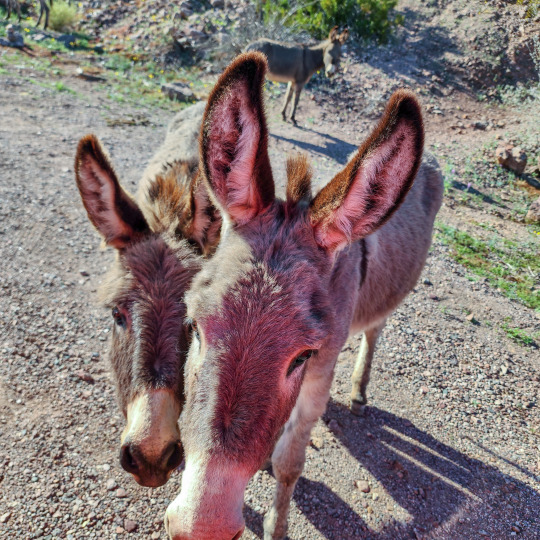#burros
Photo

Group on burros in front of Adobe Hotel, Las Vegas Hot Springs, New Mexico
Photographer: James N. Furlong
Date: 1879-1881
Negative Number: 138869
162 notes
·
View notes
Note
are mustangs a native or invasive species? do you think they should be rounded up?
I think it would be overly conclusory to say either at this point. As far as I know, there haven't been any radio carboned equine remains that show they survived through the ice age in North America. There is some evidence that shows they survived later than what was originally thought though, and were also in the West before the Pueblo Rebellion, which was when many white people thought they were introduced there.
But if they are not native, it would be a mistake to automatically conclude that they are invasive because there is also a lot of new evidence that shows that they are ecosystem engineers. "Invasive" implies a species that causes ecological harm to a new area, but several studies done on wild horses and burros in the Western US show some positive impacts. The ones that I know of are:
Equids engineer desert water availability - this study was done in the Sonoran desert in AZ and showed that equine dug wells increased biodiversity in the surrounding areas by 64%, and often were the only water sources. The researchers concluded "that equids, even those that are introduced or feral, are able to buffer water availability, which may increase resilience to ongoing human-caused aridification.”
Impact Of Wild Horses On Wilderness Landscape And Wildfire - this was done in Northern California to push back on claims made by the BLM that wild horses had a negative impact on the ecosystem and had no predators. It found that horses degraded land less than some of the even-toed ungulates because their hooves are not sharp and pointed like theirs. The riparian ecosystems in the area of study were not permanently damaged by horses because predators prevented them from staying long, and their predators included coyotes, mountain lions, and bears for foals, and bears and mountain lions for adults. Additionally, by eating dry grass the horses reduced the fuel load in the area, and likely prevented a branch that fell and ignited after being hit by lightening from causing a wildfire.
A roundup in the Ash Meadows Reserve in Nevada caused a population of critically endangered pupfish to go extinct - this was cited by the first study mentioned. Once the equines were removed from the area, the riparian habitat became choked by vegetation, a whole population of pupfish died as a result.
To me what these studies suggest is that native or not, the mustangs and burros are filling a distinct role that was not taken on by another native species if their ancestors did go extinct. I don't think the BLM has properly taken this into account in their Appropriate Management Level assessments, though courts tend to give them so much deference as a federal agency that I don't think any have found that they actually violated National Environmental Policy Act. Under NEPA, the BLM is supposed to consider all reasonable alternatives when making environmental impact statement and assessment proposals. I think these studies show that livestock reduction and predator re-introduction should be considered as reasonable alternatives before roundups given the immense cost of roundups and lack of permanent improvement of the range after them, but the BLM has given reasons not to try these options such as "the horses don't have predators in this area" or " it doesn't conform to the current multiple use land management plans." The courts usually accept these reasons as valid. See Friends of Animals v. Silvey.
36 notes
·
View notes
Text

Burros P.2
Utah Department of Cultural & Community Engagement - Classified Photographs
Utah State Historical Society
#burros#portraits#utah department of cultural & community engagement#utah state historical society#donkeys
8 notes
·
View notes
Text

Cada año, en algunas zonas de Italia, los animales de pasto son trasladados de los pastos altos a las llanuras. Los corderos recién nacidos no pueden hacer este viaje solos.
En su lugar, viajan en las alforjas de una montura especialmente fabricada a lomos de un burro o una mula nodriza. Los bajan en las paradas de descanso y los devuelven a sus madres para que les den de comer y los acaricien.
18 notes
·
View notes
Text
Y'all for the love of whoever, PLEASE stop touching the wild animals.
I drove through a certain small town in my state yesterday that is known for its free range burros that come into town and wander around. I stopped for gas and noticed there were four burros already lingering in the gas station, and someone had gotten out of their vehicle to gradually approach and touch them.
DON'T DO THAT.
For one, those are still wild animals! They are not domesticated! They WILL turn around and attack you because they don't give a shit! Two, it makes them USED TO YOU!
"But isn't that a good thing? Then they won't attack me!"
NO! It just means they won't hesitate to swarm around you and then kick or bite or strike you when you don't do what they want! The lady who had touched them asked if she could feed it to her partner, who offered her a chip - a POTATO CHIP! - and I quickly gave a big "noooooo, don't do that!"
I told her feeding them gets them even more familiarized to people, but it also gets them EXPECTING to be fed which will result in aggression towards humans when there isn't food for them. A Chincoteague stallion named Chip had to be moved from his home territory in Virginia to a facility in TEXAS because people wouldn't stop feeding him and he began to attack when they wouldn't give him food.
Not only that, their stomachs are delicate! You could easily kill a burro by giving it the wrong thing to eat! I knew a horse who colicked because her owner fed her cherry m&ms. They can't throw up something that upsets their stomach. They will simply linger in misery until they die.
These burros are already unfortunately used to humans. They surrounded one girl by her truck, and she obviously had no idea the danger she was in- I learned when I was young you don't put yourself between a horse (or burro) and a hard place. If they had lunged at her she'd have had no place to run or escape. They cross roads with leisure. They approach people for food. They're not afraid, and that's a problem. I moved them off by grabbing a halter from the back of my truck (I keep spare tack back there in case someone needs to borrow some) to wave and clucking at them them so I could leave the gas station- I did not get close to them. One of the employees thanked me for getting the burros to move on because too many people would rather try to touch them or approach them.
I get it. I do. I wanted to touch them too! One of them was very obviously younger than the rest. Their ears are huge. They look soft and huggable. I want a burro I can snuggle with one day. But those ones are WILD. If you don't want to call them wild then they're FERAL. They are not tame or domesticated and they WILL hurt you if they feel threatened or if you've upset them. You're not only risking your life but also the lives of the burros by thinking "oh just one touch won't hurt" because it's not just YOUR one touch. It's also the "one touch" of everyone else who sees the burro and decides one touch won't hurt, who gets them used to humans and cars so they don't know or will refuse to move once that car starts moving.
Seriously. Leave wild animals alone. Stop trying to ride bison. Stop trying to pet coyotes. Stop trying to feed wild horses. You're doing more harm than good, not only potentially to yourself but also to them.
#Burro psa#Burros#Seriously STOP TOUCHING THE WILD ANIMALS#There were four of them staring at me with giant ears and dark eyes and do you think I wasn't tempted to touch?#I sure as fuck was!! But I am well versed in horses and equines and I sure as fuck wasn't about to touch that wild thing!#And here's the thing too- donkeys are meaner than horses. People use them as livestock guardians against small predators.#Yes they're cute. Yes they're soft. Yes they are right there.#Pretend you're in a museum though and DON'T TOUCH THEM.
62 notes
·
View notes
Text

OLGA LITTLE & MUTT
Today begins Women's history month and since I enjoy the history of the heritage burros of the Western US so much, I would like to share the story of Olga Little, Colorado's only female burro-packer ...
Olga Schaaf immigrated to the United States from Germany with her family in 1885 at the age of 2. By the time she was 4, her family had moved to SW Colorado near Durango. Her only formal education was given for a short time in her childhood in Spanish in Chama, NM. By the time she was 14 she had developed into an exceptional horsewoman and was breaking horses for area ranchers for $5 per week, as well as occasionally leading hunting expeditions into the La Plata mountains. Still in her teenage years, her skill with horses caught the attention of Frank Rivers, who owned the Ruby Mine high up in the La Platas. He asked her if she would take a string of burros up to supply the mine and bring back ore, an offer she refused right away. "I can't," she said. "I know nothing about packing." Rivers offered to pack the animals, assuring her that surely she could lead them up the mountain. Not wanting to turn down any opportunity to make "quick cash for a short job," she accepted. The journey took her all day and she arrived at the mine after nightfall, only to discover that there were no accommodations for women. Not wanting to sleep in the same quarters with the miners, she stayed up all night with the burros and returned at the crack of dawn the following day.
That fateful trip led to a nearly 40-year long career as the only "lady jackpacker" in Colorado, and gained her a place of honor in the state's history. When she was 30, she married a Scottish miner named Bill Little and they made their home at Mayday, near the mouth of La Plata Canyon. Olga Little was a diminutive woman full of grace and grit, as they say. Her normal routine was to lead a string of 20 burros high into the mountains loaded with coal and other provisions on the outbound, and loaded with ore on the return. All of 5'4" and 130 pounds, she expertly packed and hoisted her own loads of three 70-pound parcels per burro -- one on either side and one on top -- sometimes doing so right off the railroad.
In her packing career she visited nearly every high-country mine in the La Platas, most of which were located above 10,000 feet. She was known to be strong, resourceful, unphased, and good to her animals. She never whipped or cursed them and on one occasion when a burro skidded down a ravine and was trapped by the deep snow, she regularly delivered him hay for months, keeping him fed and alive until the snow melted and she was able to retrieve him. She not only did a man's job, she sometimes did work men couldn't manage. On one occasion, she saved the lives of 18 starving miners from the Neglected Mine. She led them down to Transfer through a blinding blizzard, one miner behind each burro, holding tightly to the burros' tails as they trudged on in the darkness through snow and ice, all the while with Olga checking on their wellbeing as they made their way down the mountain to the safety of Transfer. This rescue story is often told by historian, Historian Andrew Gulliford, who wrote, "The mining legacy of La Plata Canyon and the role of Olga Little is all but forgotten in the 21st century. The landscape of the working west is now just scenery." The truth of this observation is so poignant to me now as I realize in writing this article that not even six months ago I burro-trekked in search of scenery out of Transfer -- the VERY PLACE Olga Little brought her rescued miners by burro-string -- with my own burro, Luna Blue!! (Follow my own burro trail adventures on my new FB page: Outbound Burro).
Olga's burros carried the full laundry list of supplies needed for mining from steel cables and heavy timbers to bales of hay and even the injured and deceased. Olga always wore the same high-laced boots, jodphurs, and a wide-brimmed hat and packed her burros in to the mines year-round. Her arrival was always a treat for the miners and in anticipation, they would clean themselves right up. All the miners of the La Platas held Olga Little in high regard and treated her with the utmost respect. After all she was their lifeline, especially through the winter!
Olga Little's life story has been honored in many ways. When she was alive, she was featured on the TV show "This Is Your Life" and since her passing in the 1970s, she has been depicted in murals and featured in articles. In 1983, a peak in the La Plata mountains was named Olga Little Mountain. Kathleene Parker, who nominated Little for the honor, did so hoping to not only enshrine her legacy in Colorado's history but also to ensure that our children always understand that the women of that era were no "clinging vines." Upon receipt of the nomination, the Executive Secretary for the U.S. Board of Geographic Names, wrote at the time, “I may be wrong, but I don’t think there is a feature in the country named for a woman muleskinner.” Another example of women sharing Olga's "herstory" is the painting "Olga's Return" by renowned artist (and friend and Mancos neighbor) Veryl Goodnight, for which she did a study involving an actual recreated pack burro supply adventure in the Colorado mountains. (Link to the Veryl Goodnight Gallery below.)
So who is Mutt?
Mutt was Olga's last remaining burro from her packing career. I have seen him listed as both Mutt or Matt but I like Mutt! (UPDATE: Olga Little's grand nephew commented on this post and let us know that the burro's real name was MUTT!!) As burros can live into their 40s and 50, Olga and Mutt had the privilege of growing old together. May we all have the same good fortune!
Enjoy your burros!
Wylde (\,,/) Williams
https://verylgoodnight.com/portfolio-posts/olgas-return
7 notes
·
View notes
Text


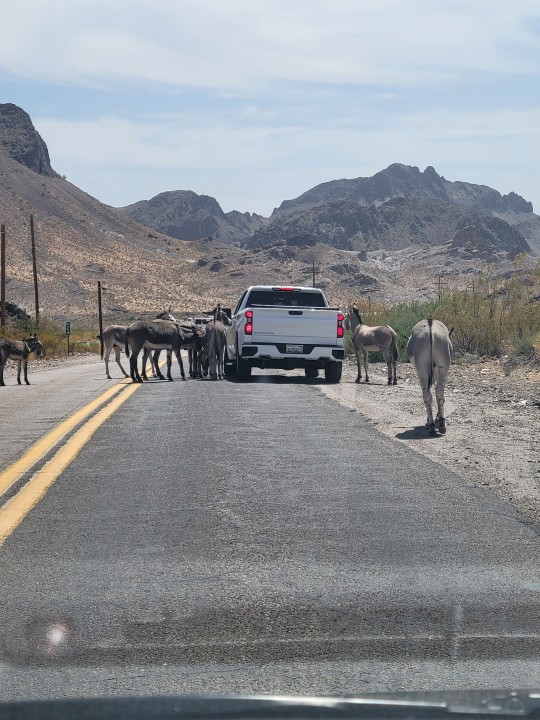

Day 2 - Oatman, AZ
3 notes
·
View notes
Photo
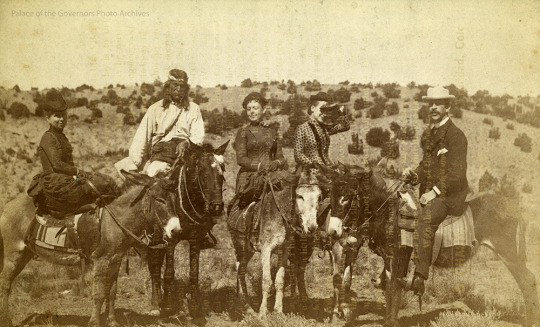
Group riding burros with guide, Santa Fe, New Mexico
Photographer: Dana B. Chase
Date: 1884 - 1892?
Negative Number: 069594
167 notes
·
View notes
Text
The donks were on a tear this morning lol
2 notes
·
View notes
Text
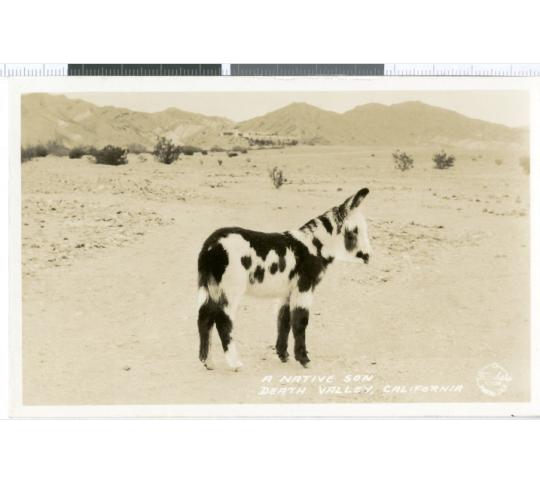
Photograph of a pinto donkey, Death Valley (Calif.), 1920-1935
Alice Brown Photograph Collection
UNLV Special Collections and Archives Portal
#donkeys#burros#pinto burros#death valley#unlv special collections and archives#alice brown photograph collection
6 notes
·
View notes
Text
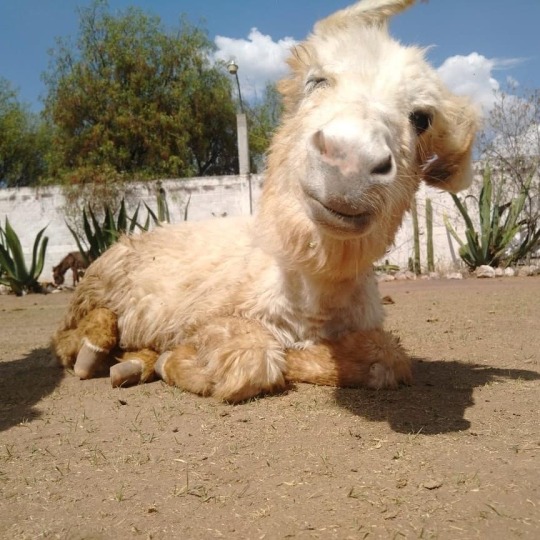
:. Se llama Hidalgo 🥰 .:
📸 : @burrolandia
#donkey#donkies#burros#burro#beautiful donkey#donkeyoftheday#donkey lover#mexican donkey#donkeys lover
4 notes
·
View notes
Text

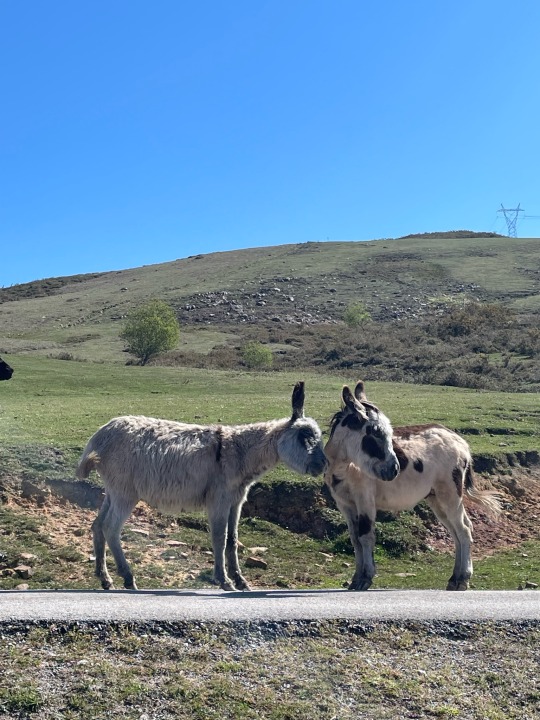
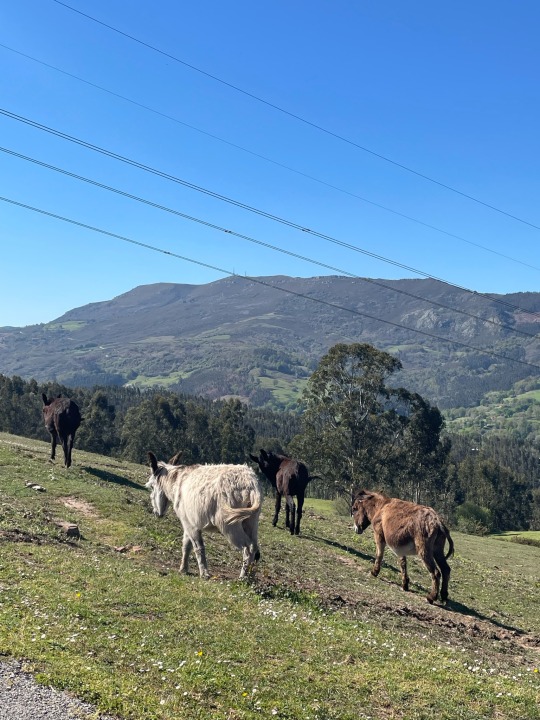


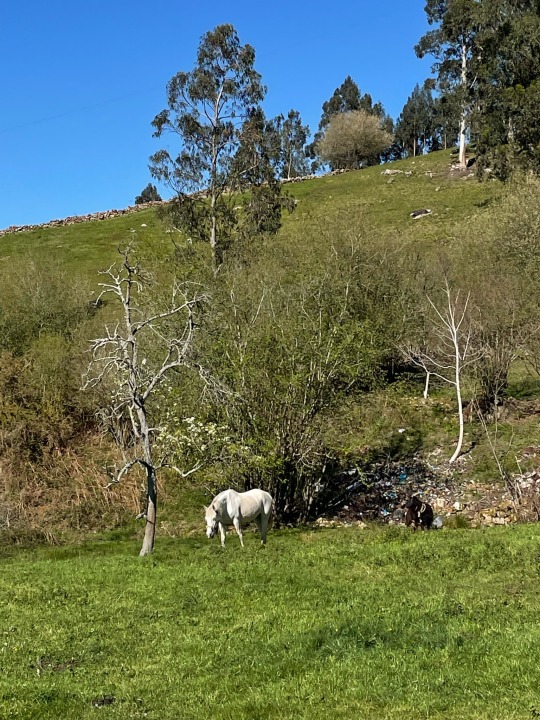



#fairycore#cottagecore#familiabrumifera#goblincore#vidaenelcampo#witchcore#cottage#cute#dabenturas#amor#mastín#burros#perros#perros tumblr#aesthetic tumblr#grass#Primavera#cat#gato
3 notes
·
View notes
Photo
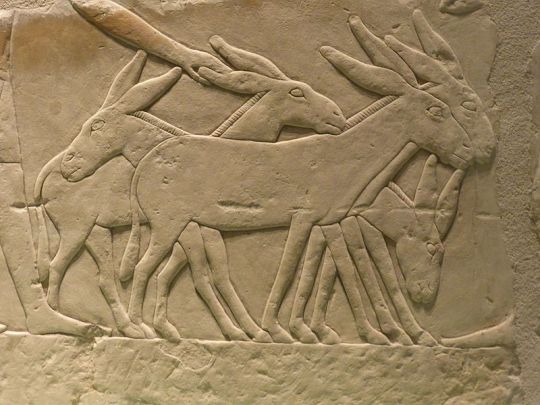
Burros en un relieve egipcio en piedra caliza, Museo Egipcio de Berlín
(fotografía de Carlos Teixidor Cadenas via wikimedia)
#burros#donkeys#egypt#egipto#donkey#berlin#carlos teixidor cadenas#relieves#art#arte#burritos#equus africanus asinus#my posts#not my pics#*#uploads#wikimedia
19 notes
·
View notes
